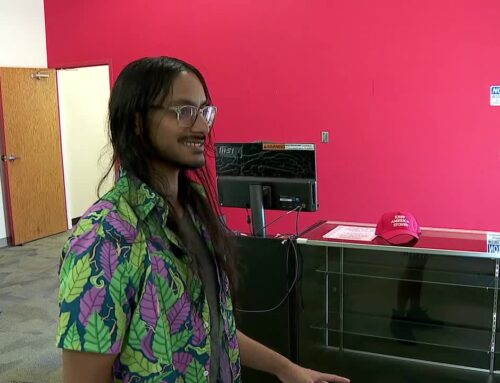How Jimmy Carter’s White House solar panels ended up in Maine
January 5, 2025
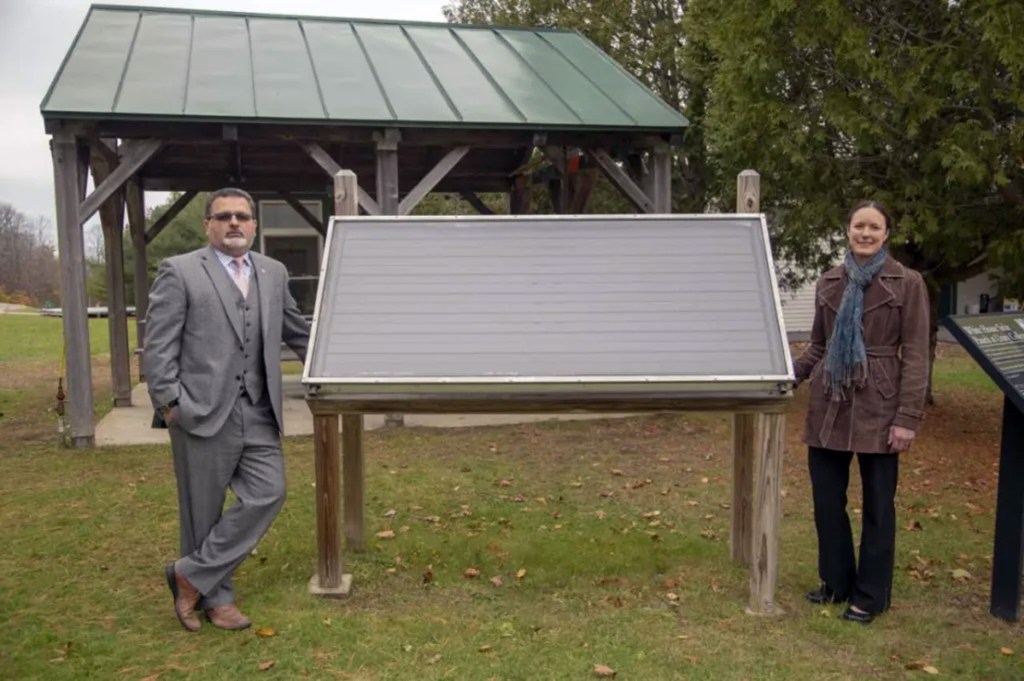
Unity Environmental University President Dr. Melik Peter Khoury, left, and Chief Sustainability Officer Jennifer deHart, stand in 2018 next to one of the college’s Jimmy Carter solar panels that the former president placed on the White House during his time in office. Two of the panels are featured in the largest exhibition ever about the sun at the Science Museum in London. Courtesy of Unity Environmental University.
The need for alternative sources of energy and a desire for energy independence prompted President Jimmy Carter to install the first solar panels on the roof of the White House in 1979.
The panels were later removed by the Reagan administration in 1986 and placed in storage. They might still be there except for a former Unity College administrator in Maine who stumbled upon an article about the panels a few years later and decided he wanted to bring them to the small environmentally-focused college for reuse.
In 1991, the array of 32 solar panels formerly atop the White House was removed from government storage and brought to Unity. Sixteen of the panels were refurbished and placed atop the cafeteria roof, where they were used to heat water for more than a decade.
Although they’re no longer operational, the fate of Jimmy Carter’s solar panels is getting renewed attention following his death on Dec. 29. The college, now known as Unity Environmental University, is still in possession of 28 of the panels while four others have found new homes, including in places as far away as China.
The university is planning to display some of the panels at its main campus in New Gloucester and its Sky Lodge campus in Moose River.
“They’re a piece of history,” said Unity Environmental University President Melik Peter Khoury. “Today solar panels are normal, but at a time when renewable energy wasn’t really a mainstream idea, they were historic. It’s about the efficacy of living in a sustainable world … and keeping up with that legacy is very important to us.”
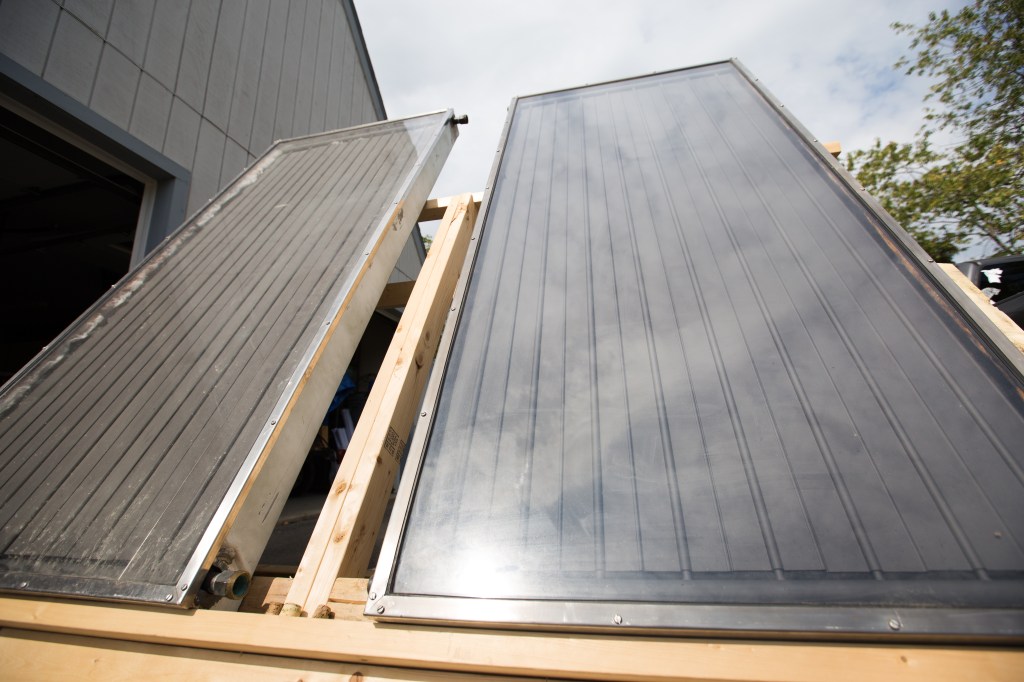
The Carter solar panels on the Unity campus. Courtesy of Unity Environmental University
In response to the economic crisis created by an Arab oil embargo and the nation’s growing dependence on foreign oil, Carter called for a comprehensive campaign to conserve energy during his presidency. He decided to promote the use of solar energy by installing solar heating panels on the roof of the West Wing in 1979, according to the White House Historical Association.
The panels were used to heat water for seven years before they were removed and placed in storage by the Reagan administration.
Peter Marbach was a development officer at Unity College when he came across a magazine article about the panels.
Unity College was experiencing some financial challenges at the time, and Marbach looked at the solar panels as an opportunity for the college to get its message about environmental stewardship and education out to the country and potential donors.
The college was founded in the central Maine town of Unity but now operates out of headquarters at Pineland Farms in New Gloucester and has put its Unity campus up for sale. In 2023, it was renamed Unity Environmental University.
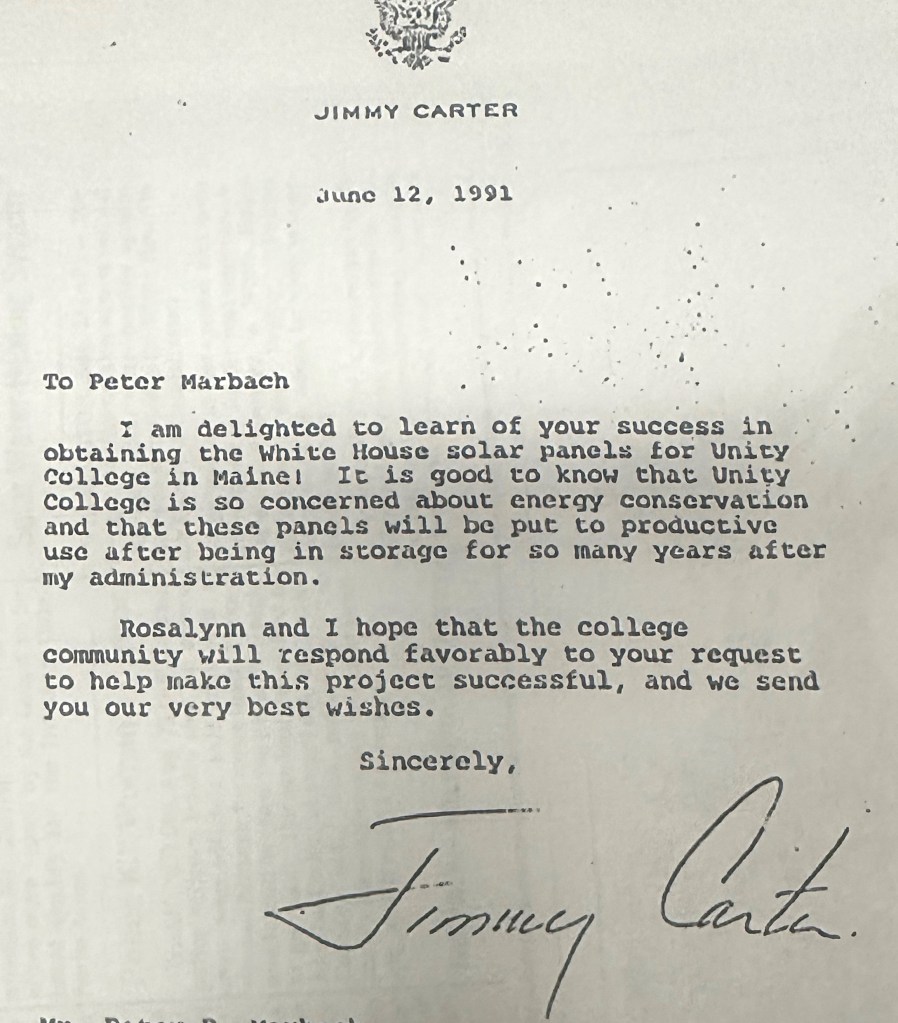
Former President Jimmy Carter sent Peter Marchand a note to say he was pleased the solar panels would get a new life in Maine. Courtesy of Peter Marbach
Marbach, who now lives in Portland, Oregon, got in touch with the General Services Administration about acquiring the solar panels and was told it could take six to eight months. He wrote a letter to Carter in hopes of speeding up the process and was astonished when Carter responded personally with a handwritten note scrawled atop the letter.
The note said that Carter would like to see the panels put to use again and wished Marbach good luck.
Soon, he was driving the college soccer team’s bus down to Washington, D.C., to pick up the panels and load them on the bus.
“It was sort of dragging its rear-end up I-95 from D.C. all the way to Unity College,” Marbach said during a telephone interview Friday.
He said the college had to pay a nominal fee of about $500 to obtain the 32 panels.
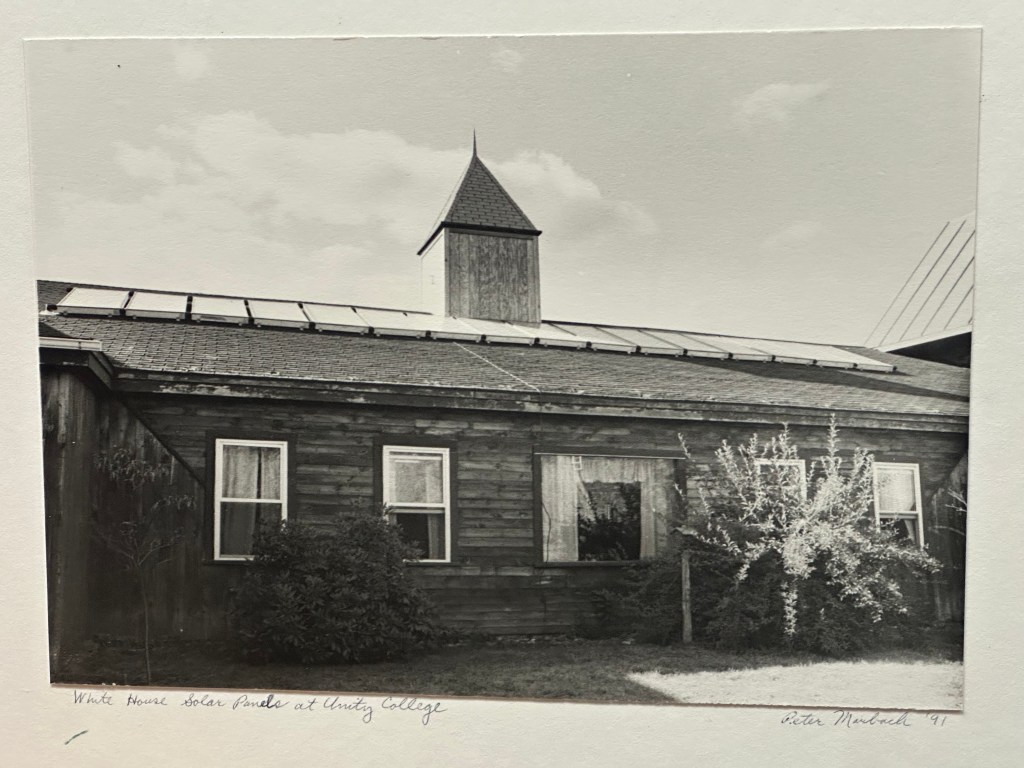
Sixteen of Jimmy Carter’s White House solar panels were placed on the Unity College cafeteria roof. Peter Marbach, who was a development officer at Unity College from 1990 to 1992, arranged for the college to obtain the solar panels from the federal government and drove a college school bus to Washington, D.C., to pick them up. Courtesy of Peter Marbach
Sixteen (which were all that could fit) were then refurbished and placed atop the school cafeteria roof, where they were used to heat water.
The panels also generated the type of positive publicity for the college that Marbach had been hoping for.
“It brought some attention to us and donations to the college started rolling in,” he said. “That attention helped keep the campus going and served to educate people about the mission of Unity College at that time.”
The panels remained on the cafeteria roof until 2010 when they reached the end of their useful life and were taken down.
In 2007, Marbach had the chance to meet Carter when he was invited to The Carter Center in Atlanta to be part of the filming of a documentary, “A Road Not Taken,” about the White House solar panels, their acquisition by Unity College and the oil crisis.
“He was such a lovely human being,” Marbach said. “At the time, he was a young 83 years old and was really spry … You felt like you were in the presence of someone who was a really special human being like he was operating at a higher plane of existence. He was just so kind and was so fully present. It was a lovely moment.”
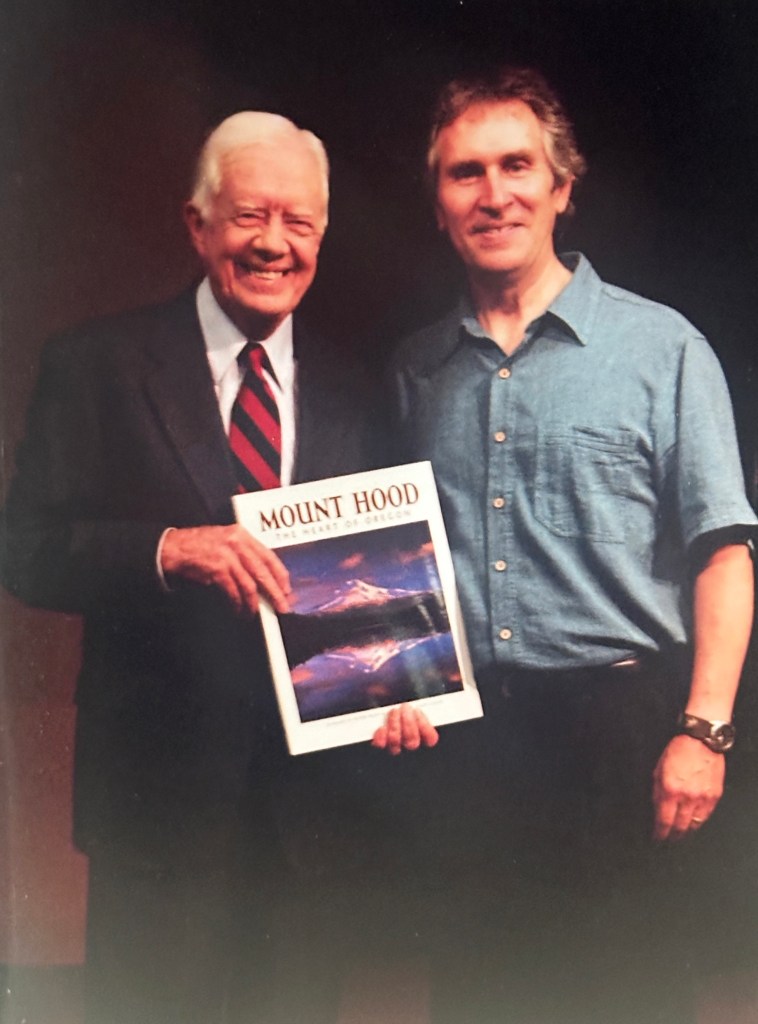
Peter Marbach, who was a development officer at what was then Unity College, arranged for the college to obtain the solar panels from the federal government and drove a college school bus to Washington, D.C., to pick them up. He now works as a landscape photographer in Portland, Oregon, and Carter is holding a book of his work in the photo of the two of them. Courtesy of Peter Marbach
In 2010, environmental author and activist Bill McKibben led Unity College students and staff on a road trip to Washington, D.C., with one of the solar panels in an effort to drum up support for renewable energy and to convince then-President Barack Obama to install new solar panels at the White House, according to Press Herald archives.
The Obama administration announced plans later that year to put solar panels on the roof of the White House residence, the installation of which was completed in 2014. There were also solar panels installed on the roof of the maintenance building under the Bush administration.
Of the 32 panels from the Carter White House, four have been given away and 28 remain in possession of the university. One is currently on loan to the U.S. Department of Energy.
The donated panels were given to the Smithsonian’s National Museum of American History in Washington, D.C.; the Carter Presidential Library in Atlanta; the Solar Energy Industries Association in D.C.; and Himin Solar Energy Group of China, which placed its panel in a museum in Shandong province.
Most of the university’s panels are currently in storage, although there is one on display at the Unity campus.
Following the news of Carter’s death, Khoury said the university is looking to set up similar displays in New Gloucester and at the university’s Sky Lodge campus in Moose River.
Although the panels are now outdated and no longer working, Khoury said the university has held on to them because of their historic nature and because they’re a reminder of Carter’s work to advance renewable energy efforts. He’d love to see students study them in their classes.
“They are a symbol that there is a better way,” Khoury said. “We’ve kept them and now we think we’ve found yet another way to immortalize that gift that we got in the panels.”
Search
RECENT PRESS RELEASES
Related Post


